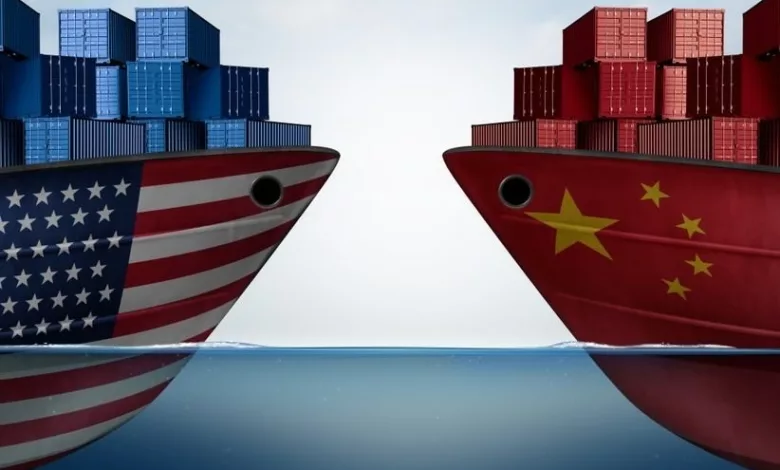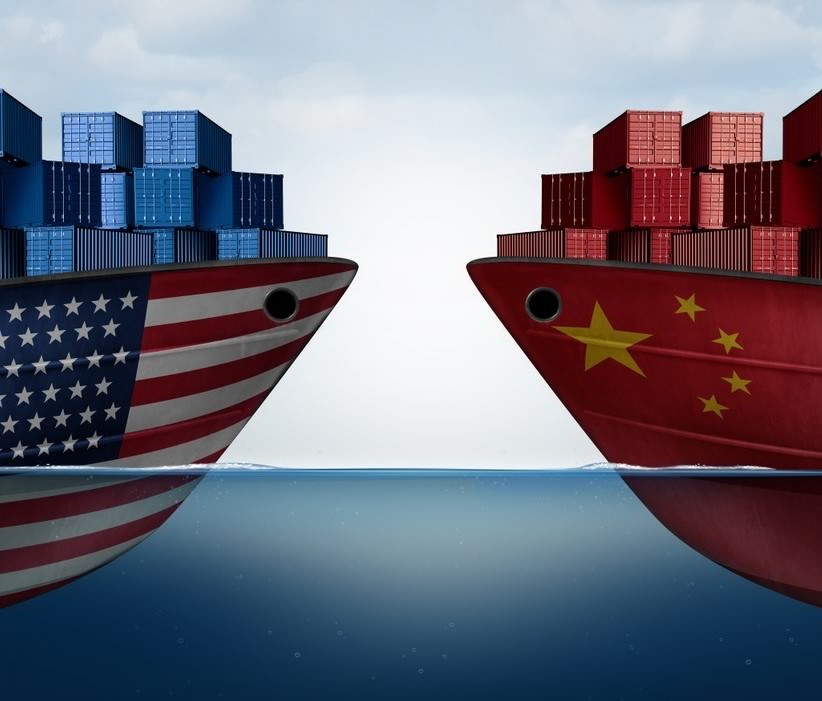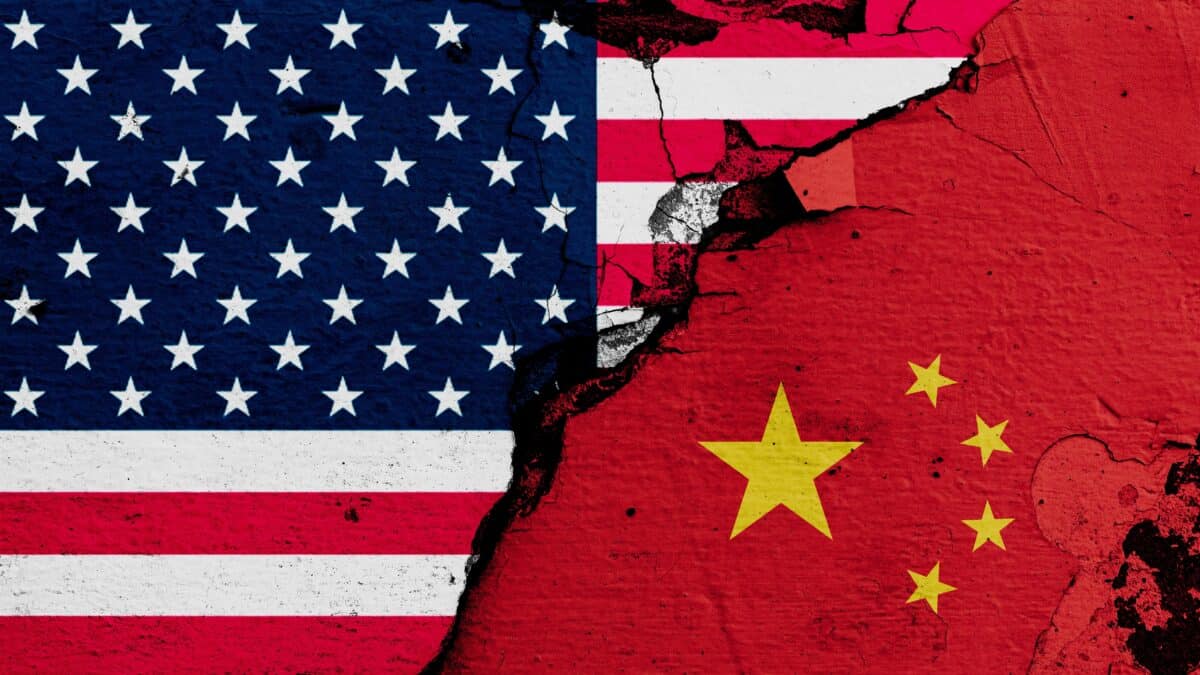Despite US trade moves in response to China and COVID concerns, no “decoupling” has occurred.

On the heels of pandemic shocks and tensions with China, US trade flows are realigning, but attempts to lessen dependency between the superpowers have not resulted in a quick decoupling.
After Washington and Beijing applied tit-for-tat tariffs, security worries increased and US imports from China decreased, but trade has subsequently increased once more. When the trade figures for 2022 are announced next month, the numbers may increase even more, demonstrating how closely connected the two largest economies in the world are. However, scientists claim that tensions have left other traces.
According to Mary Lovely, a senior fellow at the Peterson Institute for International Economics, “US imports from China are substantially below the trajectory that they were on before the trade war started” (PIIE). “Especially or largely in those commodities on which the US levied tariffs, there is unquestionably a shift away from China in US imports,” she told AFP. The value of American imports from China fell from $506 billion in 2017 to around $450 billion in 2019 after the trade war began.
Trade is influenced by a variety of variables, not only bilateral partnerships. Additionally, the pandemic had a severe impact. China’s exports fell by the most in November last year since the start of COVID-19, as a stringent “zero COVID” policy harmed commercial activity. An “ongoing trend in the US away from spending on products,” according to Ryan Sweet of Oxford Economics, “is also impacting imports.”
During the outbreak, Americans spent a lot of money on imported goods, but now that the virus fears have subsided, “they are going back out and spending on services,” he added. This reduces the demand for goods and may contribute to the reason why numbers have not increased further.
For the time being, US government data from November indicates that overall commerce between the US and China may approach or reach a peak in 2022. In the future, Sweet predicted that there would be greater diversity rather than a total halt to imports from China. For instance, during the pandemic, supply chain issues were present in the auto industry. According to Robert Koopman, a lecturer at American University and a former chief economist of the World Trade Organization, the hazards of over concentrated supply chains in one company or one region are also rising as a result of increasing climate-related disruptions.
In the meanwhile, the US is working to increase its independence in certain industries, notably semiconductors. The recent “Chips Act” and associated penalties are unmistakable examples of the Biden administration’s attempts to break these ties with China, according to Koopman. “As corporations reassess risk and analyze the existing situation of their supply chains, one continuous effect is a movement away from China to other countries,” said Emily Benson, a senior fellow at the Center for Strategic and International Studies (CSIS). These might be nations closer to the United States or Southeast Asia.
While the tendency is expanding, she told AFP that it more closely resembles sand spilling out of a bag than a tsunami. Although it is probably “too early” to make firm predictions about specific industries, US export restrictions “are going to compel some decoupling” over time in technology or other areas where chips are crucial,” according to Benson. According to Lovely of PIIE, some businesses have relocated from China to nations like Vietnam or Mexico.
According to her, there has “certainly been some supplier substitution,” which is in part due to Chinese investors who have created factories abroad. Lovely said, “In Mexico, it’s a different story.” There has been some investment from China, but much of it comes from international corporations that are relocating closer to the US. But Koopman issued a warning, pointing out that for nations like Mexico to maximize gains, domestic changes will be necessary to increase competitiveness and reduce implicit trade costs.
The US is catching up on its imports of products from the EU, with the year-to-date total for 2022 reaching $504.4 billion in November. This was more than the $499.5 billion in products imported from China within the same time frame.
However, experts blame the growth on an increase in global commerce following the COVID scandal. As opposed to any particular decoupling trend, “these data are a limited snapshot and are more likely indicative of the global economy recovering to pre-pandemic levels,” according to Benson. Vice Premier Liu He stated this month in Davos, Switzerland, that China anticipates a notable increase in imports as it recovers from an infection outbreak following the relaxation of COVID-19 regulations.
Why U.S.-China competitiveness in the semiconductor industry is important
After President Joe Biden took office, the topic of economic security, namely boosting the resilience of supply chains, began to get significant attention in the U.S. However, several analogous occurrences had already happened before that, even if they weren’t formally classified as problems with economic security.
The Rust Belt, a region of the Great Lakes states with a long history of industrialization and where Donald Trump won the 2016 presidential election, experienced an economic downturn that pushed the United States to increase pressure on China and work to uncouple their markets. The Trump administration implemented duties on imports from China following Section 301 of the U.S. Trade Act because it believed that Chinese exports were to blame for the industrial downturn. But Washington’s reliance on Beijing persisted, leading to a widening of the trade gap between the United States and China.
The usage of several Chinese-made components in important U.S. infrastructure also raised concerns for the Trump administration, which moved to ban items from Chinese manufacturers like Huawei Technologies, especially from the upcoming 5G mobile network.
To exert pressure on Beijing, Washington has been employing what is known as “economic statecraft,” which is the use of economic instruments to achieve foreign policy goals. When the COVID-19 pandemic, which has been ongoing since 2020, caused a worldwide economic slowdown and manpower shortages in manufacturing and distribution, resulting in chip shortages, the U.S. started to realize the fragility of supply chains.
As soon as he took office in January 2021, Biden signed an executive order to investigate the supply chains used by four industries: essential minerals, large-capacity batteries, semiconductors, and medicines.
The executive order required a thorough study and risk assessment of the industrial bases pertinent to seven federal agencies in addition to the reviews. Assessing their dependence on China was given special attention. The Biden administration was concerned that Beijing could maintain control over strategic chokepoints, which are vital goods that have an impact on the entire supply chain, as the U.S. had been recognizing China as “a strategic competitor.” As Washington is dependent on Beijing, this makes it strategically vulnerable.
The U.S. trade policy with China, including the decoupling strategy of the Trump administration and the supply chain strengthening program of the Biden administration, symbolizes a fiercely competitive relationship. Since World War II, the United States has viewed free trade as the fundamental tenet of the global economic system. However, to compete with China, it may be necessary to compromise this tenet.
These China-focused strategies might be seen as a manifestation of the “Thucydides trap” in the economic sphere, a concept created by political scientist Graham Allison to describe the propensity for war to break out when a dominating power is opposed by a burgeoning force. The U.S.’s primary aim is to prevent such a scenario from occurring because of its dependency on China, the nation that poses the greatest danger to Washington’s standing in the international community.![]()
The U.S.-China struggle for semiconductor market share is where the Thucydides trap is most obvious. It must be highlighted that the scenario involving chips differs significantly from other industries susceptible to U.S.-China conflicts, such as storage batteries, medicines, and rare earths, in light of the new export limitations on semiconductors announced by the U.S. in October. One-third of the world’s storage batteries are produced in China, which also controls 70% of the market for the raw materials used to make the batteries, including lithium. China is also a major source of active medicinal components for the United States.
According to estimates, China controls 80% of the world’s rare metals market. The United States does not rely on China for semiconductors, though. Advanced chip production is a strength of Taiwan and South Korea, but such goods are better designed in the United States. The U.S., Japan, and the Netherlands are the three countries with the most advanced semiconductor production machinery. In all these areas, China lags. High-end semiconductors are imported from Taiwan, and the nation depends on Western nations for the design information and machinery needed by its chip sector.
Even still, the U.S. is tightening regulations on semiconductor exports to China, ostensibly to restrain the country’s chip industry’s expansion while also working with other Western nations to accelerate the production of more advanced chips and widen the technology gap with China.
This means that Washington is attempting to increase the superiority of the U.S. and other Western nations so that it is difficult for China to catch up, preventing Beijing from promoting growth in sectors that require advanced semiconductors, such as smartphones and data center servers, and, more importantly, artificial intelligence, supercomputers, and quantum technology. We must nevertheless keep in mind that the U.S.’s tightened export restrictions to China are only applied to high-tech semiconductors and not to other chip goods.
Because AI and quantum technology are important as next-generation military technologies, and because it is thought that having technological superiority in these areas is directly linked to maintaining military superiority, the U.S. is attempting to maintain technological superiority and prevent the emergence of China. Because of this, even though the United States does not depend on China for product supply, semiconductors are mentioned with other industries like batteries as a sector whose supply chain needs to be tightened and as an industry that may be moving toward a partial decoupling from China.
edited and proofread by nikita sharma




